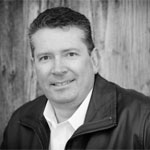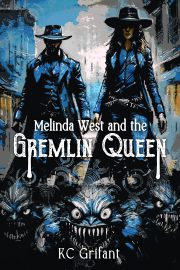Key Conditions for Suspense:
Part 22 – Patterns for the Struggle: Element 1
by John D. Brown
 The following is part of a continuing series. If you wish to start at the beginning, head to It’s All About The Reader.
The following is part of a continuing series. If you wish to start at the beginning, head to It’s All About The Reader.
In the presentation phase, readers are introduced to the problem. But they want more than a moment of sympathy or worry. They want their hopes and fears for the character to build to a pitch.
How do we do that?
We don’t let the characters solve the problem. Not yet.
So our character forms a goal—solve the problem—identifies the first step to do just that, and takes action. Of course, she won’t solve it with that one action. We’ve talked about this. If she solves it right out of the gate, the story is over. We want reader tension to build, not dissipate. And so she’s going to go around the story cycle a few times trying to solve the problem.
How many times?
There’s NO set number. There are many variations that work. However, I will say that with the central problem you probably need at least three revolutions (some subplots might only require one revolution). First, you need that many to create a story long enough to make it a novel. In fact, you’ll probably need many more. Second, there’s something about three that makes it feel significant, that the character has achieved something. Finally, three seems to be the number that sets a pattern. If someone fails the first two times, we’re likely to think they’ll fail the third. I believe this helps build tension surrounding that third attempt.
So while our hero makes some headway, she also runs into troubles that seem to threaten complete failure. The reader feels the hero has a chance of winning, but the troubles and failures make the odds of her losing seem to grow. Furthermore, the hero begins to run out of time, the stakes (what might be lost) are raised, vague threats become very specific. These are all the problem intensifiers we talked about in the first post in the series, and all of them make the reader’s worry grow.
So what about the structure of this phase? Do you have to follow a strict pattern of “pinch points” and “mid act reversals”?
You should know the answer to this. There are just too many options and variables for there to be one best sequence of events.
What you need to do is keep throwing troubles, conflicts, surprises, and obstacles at the reader. You also need to let the hero have some successes. This allows the reader to have cause to fear AND hope, and to not know for sure how it’s all going to turn out. You need to plant good and bad possibilities in the READER’S mind. But there is a huge variety in the number and placement of these obstacles and successes.
At some point, the hero finds herself with one last chance to resolve the problem. When she heads, by decision or by force, into that final showdown, that last possible attempt to solve the problem, the struggle phase ends.
Here are some of the elements to consider when you sequence the events of this phase:
- The type of problem your character is solving
- Trouble progression
- Actions the antagonist takes to oppose the hero
- Number of stories and plot turns
- What leads the hero into the final showdown
- Proportion
I’ll briefly discuss options for the first in today’s post.
The type of problem your character is solving
Each type of problem requires different actions to solve it. If gang bangers are threatening your son, you will take one set of actions to solve that problem. If you’ve just met the love of your life, you will take a different set of actions. If you’re caught at sea in a massive hurricane, you’ll take a third set of actions. Let’s look at a couple of problems in a little more detail.
If you’re working with a murder mystery, a critical first step is identifying any clues that might lead to information about who did it and why. So your character will examine the crime scene. Next, he’ll go talk to people associated with the victim. Next, he’ll run down leads he finds from those initial investigations. He’ll find more clues and more leads. He’ll form a hypothesis, test it, and find it’s wrong. So he’ll track down more clues. Finally, he’ll figure it out. Now, he has to figure out how to capture the perpetrator.
However, if you’re working with a problem where a team of soldiers needs to go behind enemy lines to sabotage a military installation, you might start with the selection of the soldiers, then their training, then their deployment to the theater of action, then them going behind the lines, then their arrival at the target, then their escape.
If you’re working with a love story, the characters need to meet. The reader needs to see romantic possibilities, but something must prevent them from getting together. This obstacle is the problem. However, if the obstacle is that they work for diametrically opposed organizations (she’s a gun-toting Minuteman, he smuggles illegal immigrants across the border) then the resolution will proceed differently than if the obstacle is that she’s already engaged to be married.
So look at your problem and identify the main steps of how it might be resolved.
Sometimes it’s helpful to work backwards. If you know what the resolution is, then describe the situation the character is in at the end of the story and reverse it. That’s what you present at the beginning.
For example, if Spiderman is confident and single-minded at the end, present him conflicted and doubting at the beginning. Then think about the types of things or steps that would help the hero get from point A to point B. What kinds of experiences would force him to look at things in a new way or make a decision or come to realize what’s really important?
However you work, forwards or backwards or both, it often helps to map out all the main steps you see to someone resolving the issue. And don’t feel your story must have the same number of steps as another story.
For example, The Hunger Games has seven parts to its structure:
- Present problem – 8%
- Preparation for the games – 31%
- First round of fights – 12%
- Rue – 11%
- Peeta – 22%
- Climax – 12%
- Aftermath – 8%
The exact wrong thing to do would be to conclude that all awesome stories (which I thought Hunger Games was) must have seven parts with the proportions shown above, including the hero going on the offensive around the 53% mark.
Why do I say this? Because a lot of awesome stories don’t.
Let’s look at the idea that the hero should go on the offensive at the 50% mark. In Dean Koontz’s The Good Guy, the hero goes after the villain at the 19% mark. Then he flees, even as he’s working to solve the problem. Only at the 85% mark, does he actively go after the killer again. In Lee Child’s The Enemy, the hero is actively trying to solve the murder mystery from the start. In Louis L’Amour’s Ride the River, the heroine is being chased for the whole novel. Not until the very end does she turn the tables.
I could list many more examples. The point is that having the hero go from reacting to acting at the 50% mark is only ONE pattern. Maybe it fits your story, maybe it doesn’t. The same applies to the seven parts.
Instead of trying to fit your story to one pattern, put yourself in your character’s shoes and think about the main steps you would take to solve the type of problem your character faces. If you have no idea of how to even start solving this type of problem, do a bit of research first. When you’ve thought it through, you should have a general sequence of events (which may change as you write).
Once you have that sequence, you have a general idea of how the story will progress, but that’s not enough because this phase is not about solving a problem. It’s about making the problem harder to solve. It’s about throwing increasing troubles at the main character and making them struggle. So while you think of the general steps to solving the type of problem your character faces, you also need to think about the types of troubles you’ll throw at the character and how those troubles progress.
I’ll get into those topics in the next post.
Happiness,
John
•••
 John Brown is an award-winning novelist and short story writer. Servant of a Dark God, the first book in his epic fantasy series, was published by Tor Books and is now out in paperback. Forthcoming novels in the series include Curse of a Dark God and Dark God’s Glory. He currently lives with his wife and four daughters in the hinterlands of Utah where one encounters much fresh air, many good-hearted ranchers, and an occasional wolf.
John Brown is an award-winning novelist and short story writer. Servant of a Dark God, the first book in his epic fantasy series, was published by Tor Books and is now out in paperback. Forthcoming novels in the series include Curse of a Dark God and Dark God’s Glory. He currently lives with his wife and four daughters in the hinterlands of Utah where one encounters much fresh air, many good-hearted ranchers, and an occasional wolf.
For a list of all of the posts in this series thus far, click on the “John D. Brown” tag.


